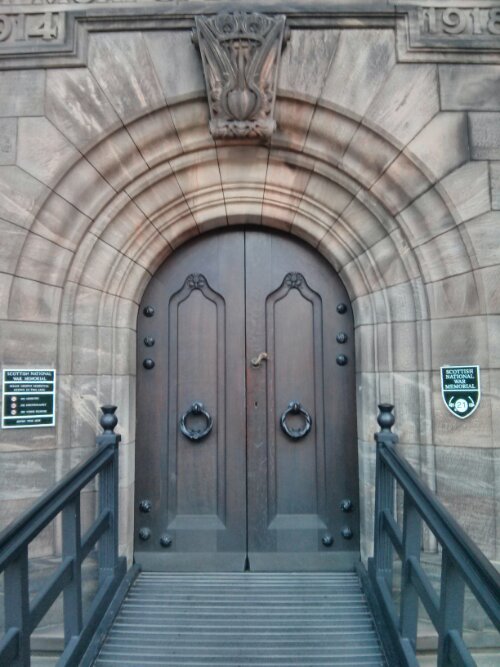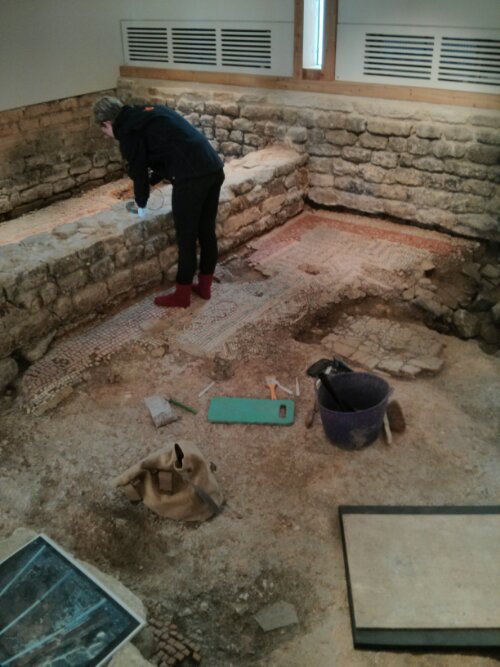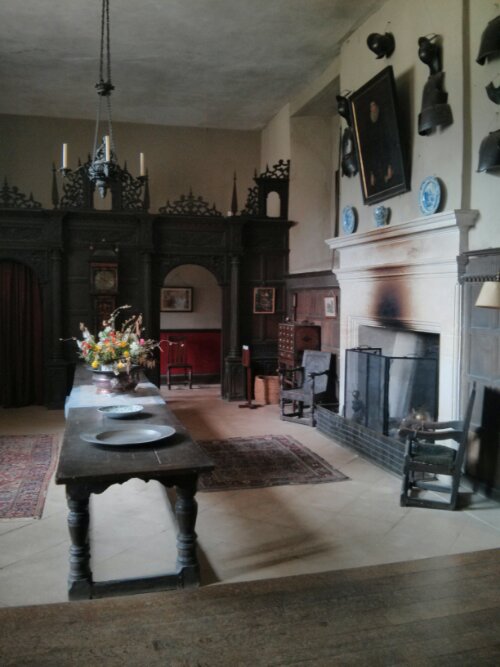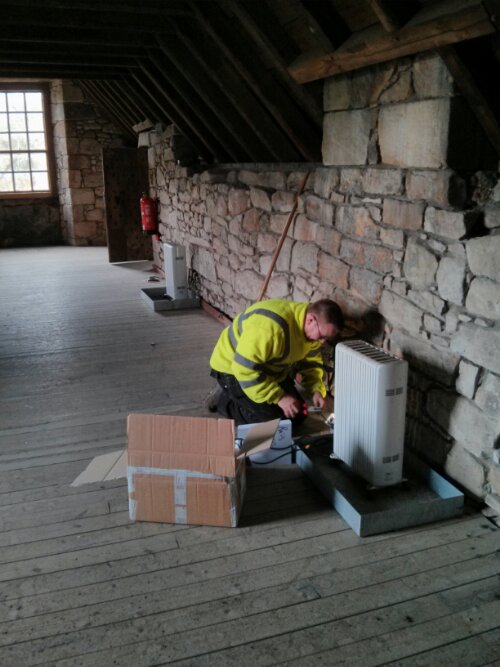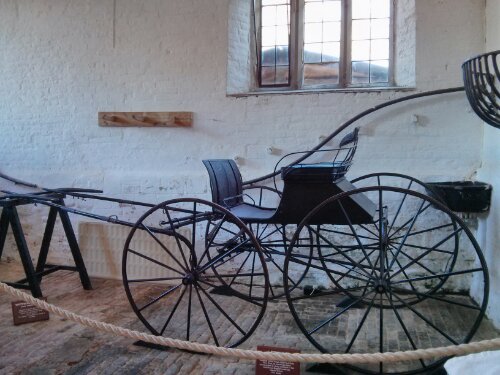Unusually for a conserved site, this museum aims to keep relative humidity high. This means that the Roman mosaics won’t dry out too much and shouldn’t get too damaged by salt efflorescence. The humidity sensors are linked to the vents in the building, causing them to open when the relative humidity gets too high. This is a very energy efficient system.
Category Archives: Uncategorized
Winter Opening
Even on a sunny day the house remains cold. The heating can’t be put on high as it will cause relative humidity to fall too low. This isn’t always too popular with room stewards who need to be on duty for a while. It is less of a problem for visitors as they are usually dressed for the outside weather. One way around the problem is to give stewards a portable heater but these can be pretty expensive to run.
Unoccupied Castle
The environmental conditions have to be kept under control even though the castle is rarely visited. Electricity bills also need to be considered. The solution is to use portable electric heating controlled by Meaco CHH humidistats. Data loggers are also needed to ensure that the heating system is working correctly.
Carriages Conservation
Carriages are made up of a variety of materials. Some of these materials will need a museum environment and some will be just fine in an unheated carriage house. Probably the best middle ground is to keep relative humidity below about 75% as a happy medium. This will keep the worst of the mould and insects under control whilst allowing for the carriages to be kept in an authentic carriage shed. All humidistat and an electric heater suffice.
Windows
The data logging equipment has been installed in this church for a few months now. This visit is a check to see that it is working as intended and to start to determine the effectiveness of the protective glazing. The mild winter is a bit of a problem as we want to know how the design works in really cold weather.
Dawn
Just after sunrise, on a clear day at this time of year, the sun pours into these windows. It’s a great sight and probably helps to warm the building a little. The downside is though that it risks fading the textiles hanging on the far wall of the room. The shutters on the windows will need to be used quite carefully to control this intense light.
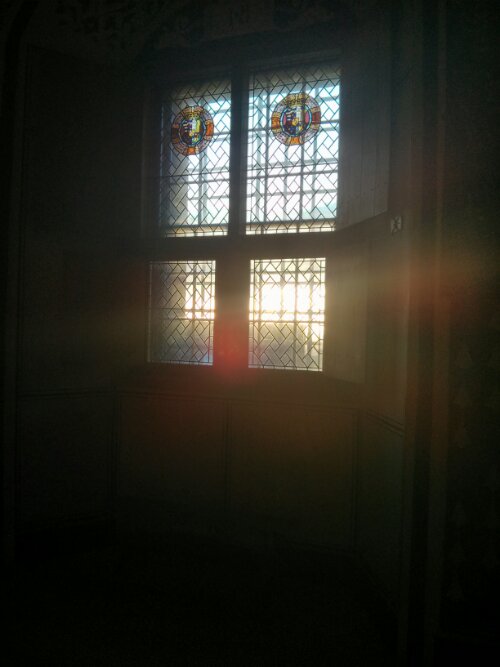
Display Case Adaptation
The water reservoir on this mini air conditioning unit has been found to be too small. This means it fills up too often and prevents the unit from maintaining correct relative humidity.
A new larger bottle has been ordered and will be fitted in January. Until then a water bottle has been adapted to serve as an overflow reservoir.
The monitoring equipment will show whether or not the adaptation is successful.
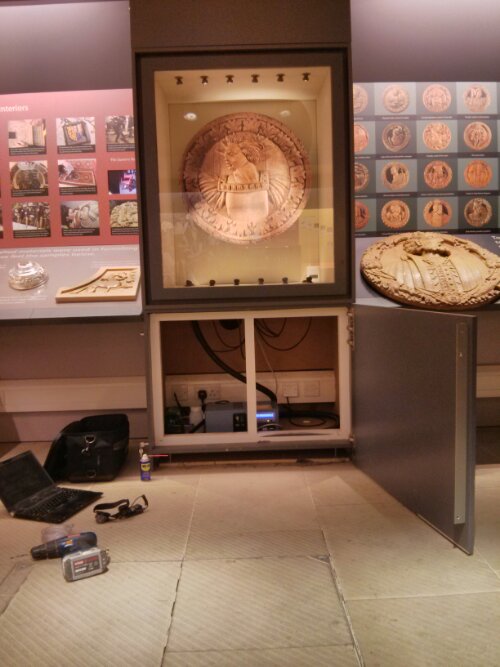
Another Door
Scrimshaw
Air Conditioned Display Case
A loaned object is expected here in a few months. The lender requires proof of good environmental conditions before the loan arrives. The Miniclima air conditioning in the case has been repaired as has the Meaco telemetric sensor. It will now be left for a few months to prove itself. In the meantime the underfloor heating system will be looked at as the suspicion is that the thermostat is faulty. We want to get the conditions in the room about right so that the display case has less work to do.
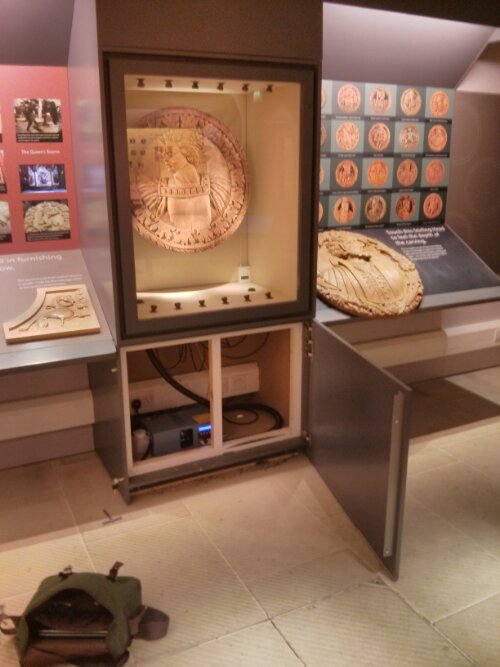
Stained Glass Window Conservation
The heating in this church has recently been upgraded. This, combined with thousands of visitors per year, puts the stained glass windows at risk of damage from condensation. We have installed a thorough monitoring system to assess the risk over a year. It’s a system designed by Eltek Data Loggers and it monitors many different parameters.
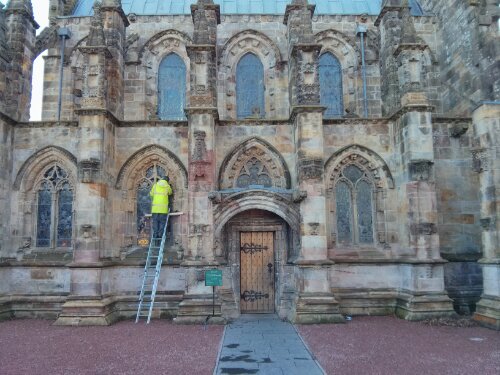
Closed Door
This is one of the simplest and most effective interventions that I’ve been involved with. Until recently, established practice was to keep these doors open much of the time. This is the way it had always been and nobody gave it much of a thought. Having the doors shut now gives much better conditions inside the building, makes it warmer for staff and saves energy. It seems simple in retrospect but took a fair amount of liaison between all the different users of the building.
